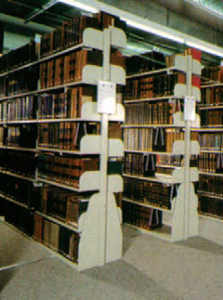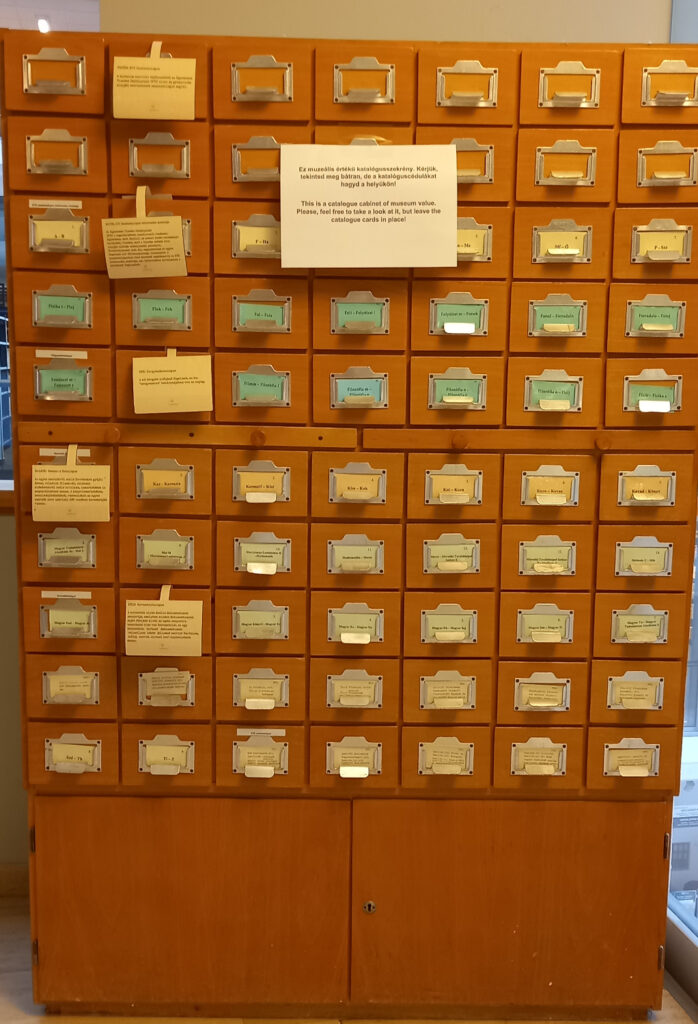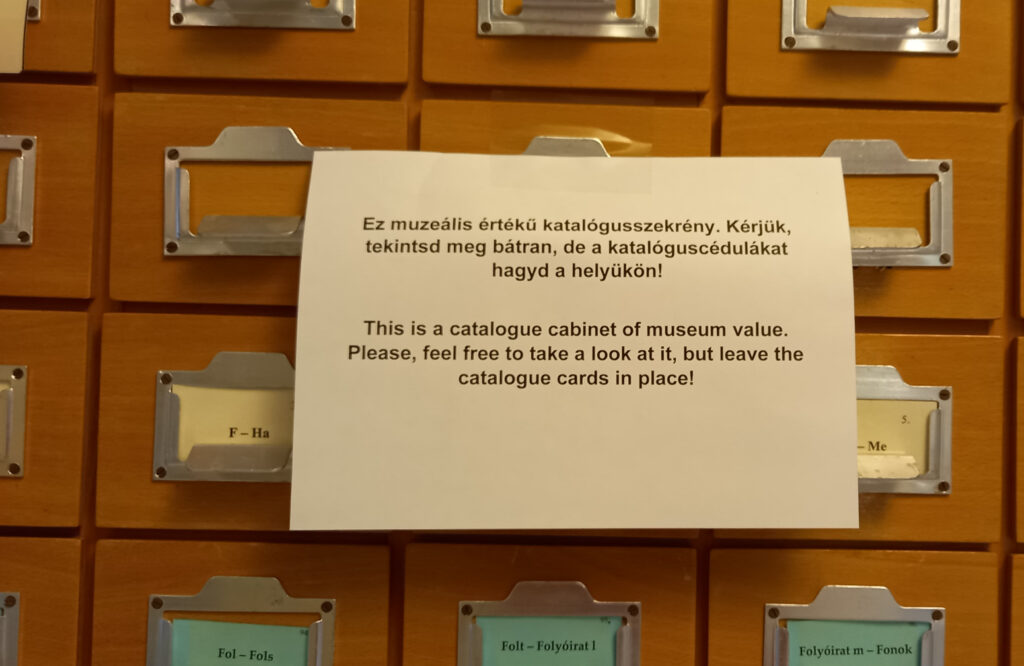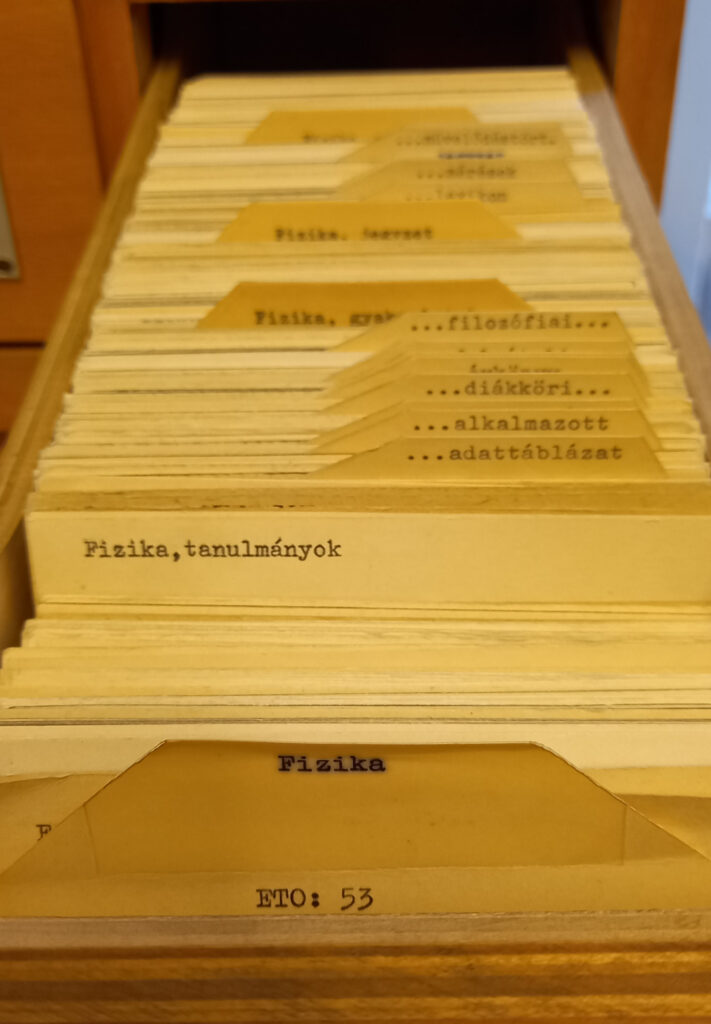- Home
- All Courses
- Contemporary library and information skills
Curriculum
- 9 Sections
- 31 Lessons
- 14 Weeks
- Introduction3
- 1) Library basicsThe main types of documents covered in these lessons, and the principles of the organisation and retrieval of library collections.2
- 2) Library use in the SZTE Klebelsberg Library and ArchivesThe chapter provides help on how to find and use the printed documents of the SZTE Klebelsberg Library and Archives, including the online options.5
- 3.1Video lesson: Library tour16 Minutes
- 3.2Video lesson: The website of the SZTE Klebelsberg Library and Archives9 Minutes
- 3.3Reading lesson: Printed documents in the SZTE Klebelsberg Library and Archives30 Minutes
- 3.4Reading lesson: Print periodicals30 Minutes
- 3.5Reading lesson: Encyclopedias and Lexicons – from glossaries to online forms30 Minutes
- 3) Search the Library 1: online catalogue(s)This chapter covers the basics of database searching. It introduces the online catalogue of the SZTE Klebelsberg Library and Archives (Qulto), gives useful tips on how to use it more efficiently, and explains what you need to know about interlibrary loan.4
- 4.1Reading lesson: Library catalogues and electronic databases: basic search information25 Minutes
- 4.2Video lesson: The online catalogue of the SZTE Klebelsberg Library and Archives: basics8 Minutes
- 4.3Video lesson: The online catalogue of the SZTE Klebelsberg Library and Archives: extra features with registration10 Minutes
- 4.4Reading lesson: Interlibrary Loan, Combined Library Catalogues, and Metasearch Engines25 Minutes
- 4) Search the Library 2: electronic resourcesThis chapter looks at searching the online resources provided by the SZTE Klebelsberg Library and Archives.6
- 5.1Reading lesson: Electronic resources in general20 Minutes
- 5.2Reading lesson: Electronic resources at the SZTE Klebelsberg Library and Archives25 Minutes
- 5.3Video lesson: Online resources – Summon Discovery8 Minutes
- 5.5Reading lesson: International databases15 Minutes
- 5.6Reading lesson: What to know about eBooks?30 Minutes
- 5.7Add-on: Google and others25 Minutes
- 5) Managing digital library content and community-based content developmentThis module presents repositories, the institutional digital collections specific to higher education libraries. In addition to a general introduction, special emphasis is given to SZTE Contenta, a repository system maintained by the SZTE Klebelsberg Library and Archives.4
- 6) Academic writingThis module provides an insight into the criteria, characteristics and techniques of academic writing, the skills involved in collecting and managing literature, and the principles of scholarly writing.3
- 7) Writing history and librariesThis module gives an overview of the types of scripts and documents from different periods and the different types of libraries.3
- Glossary of terms1
Reading lesson: Library collection
This lesson introduces the principles of library collection organisation and retrieval.
Add-on: collection management
Collection scope, classification, call number system
Retrieval of the collection: the library catalogue
The document record-keeping system
Add-on: collection management
The composition of a library’s collection* (stock) highly depends on the library’s type. For instance, while the collection scope* of university libraries is largely shaped by the book requirements of students and teaching staff (i.e., textbooks, specialized books), municipial libraries tend to have a collection of general non-fiction and fiction books, usually coupled with a collection of local history books about the settlement where they are located.
Every library, including the SZTE Klebelsberg Library and Archives, also has a Collections Policy that sets out guidelines for collection development.
Collection
Collection refers to the stock of books and periodicals as well as other printed and electronic documents held by libraries.
Collection scope
A library's collection management profile, which defines the range (type and/or subject) of publications it acquires on a regular basis.
In order for a library to be able to provide proper access to its collection, it has to store the documents in an appropriately organized manner. This is important because any inability to actually find a necessary piece of information is equivalent to that information being essentially inaccessible at the library.
To avoid any problems, libraries have to make sure that collections management involves the following:
- The arrangement of acquired documents in a certain way
- The implementation and use of a call number system required to find documents
Collection arrangement methods
The physical design and internal layout of each library is different, and the structure of a particular library building may largely depend, among other things, on whether it has to make millions of books or just a few tens of thousands of books accessible to readers. Accordingly, what follows is a look at some of the factors that determine the way the collection of a library may be arranged.
1. Arrangement based on access
From a reader’s perspective, the most convenient way to access documents is by taking them off the open shelves. However, certain libraries, particularly ones that have an especially large stock or that house protected collections, also need to have a closed storage system in place. In fact, libraries often use a combination of both type of systems.
→ Open shelves system
The most frequently used part of the collection is placed on open shelves in the reading room, where readers can search directly.

→ Closed storage system
Most of the documents are stored in storerooms that are not visited by users, where they can be stored in a more space-saving way, even thanks to special mobile shelving systems. From here, documents can be accessed by requesting them via a storage request.

2. Arrangement based on other factors
Collections arranged by document type or publication type
Documents and publications can be arranged by their type, as some document types are so different from other types that they cannot be managed in the same way in terms of classification, call numbers and storage.
Example
Some periodicals are stored in dedicated periodical archives. In addition, certain cartographic documents, including wall maps and globes, may be stored separately, for example as they are stored in the Map Collection of the National Széchényi Library in Budapest.
Other collections of this type include the Music Collection and the Collection of Old Books and Manuscripts of the SZTE Klebelsberg Library and Archives.
Thematic collections
Thematic collections are usually separate collections related to special subjects, and libraries are often specifically required to hold such collections and provide access to them.
Example
Municipial libraries have a duty to hold and provide access to a separate collection of local history materials. Libraries often draw special attention to such collections in order to make the information in the materials easily accessible to users.
There are several thematic special collections in the SZTE Klebelsberg Library and Archives.
Call number systems
In addition to the necessity of physically arranging books, there needs to be a system that allows books to be located without the librarian personally having to keep track of all of the books in the library. In technical terms, this is what makes the documents retrievable. To facilitate retrievability, a classification system has to be set up, with a call number assigned to each document to allow for its unique identification and for determining its location.
There are two major types of classification system: classification based on systematic arrangement and classification based on mechanical arrangement.
Systematic arrangement
- Thematic
- Alphabetical
- Other
- Thematic arrangement involves ordering documents by discipline or subject area.
- Thematic classification and arrangement may involve the use of a call number system that is either unique to a library or more commonly used (e.g., Universal Decimal Classification*).
For alphabetical arrangement, libraries use the Cutter number, which is a combination of the first letter of the author’s surname or the title of the document (or series) AND a number.
Other arrangements may rely on chronological or geographical classification.
Universal Decimal Classification
(UDC)
UDC is one of the library methods of organising knowledge and its carriers, which divides the sciences into ten main classes. A simpler version is used for the thematic arrangement of documents in reading room systems.
Mechanical arrangement
The origins of mechanical arrangement are linked to the use of closed storage areas, where libraries store significant parts of their collections. In these closed rooms, documents in the ever-expanding collections of libraries are stored in a space-saving way, and, as they are not directly accessible by readers, there is no need for them to be arranged systematically. As a result, books are usually given a call number in the order in which they are acquired by the library. However, this means that such books can only be retrieved with the help of the library catalogue. Compared to books that are thematically arranged, books arranged this way take up much less space in the library.
Retrieval of the collection: the library catalogue
In order to search and find documents in a library quickly and efficiently, it is therefore necessary to choose the arrangement criteria and the call number system, and then to record them using an information retrieval system*.
Such an information retrieval system is the library catalogue.
Information retrieval system
A system that facilitates communication between the user and documents, document descriptions.
A library catalogue must meet the basic criteria that users have when visiting a library.
Such questions may include:
What books do you have in the library written by X?
What books do you have in the library on the subject of Y?
What books do you have in the library written in the genre of Z?
Do you have a particular book that I am looking for?
Its author is X.
Do you have a particular book that I am looking for?
Its title is Y.
Do you have a particular book that I am looking for?
Its on the subject of Z.
In order to answer such questions, a librarian needs a catalogue that provides quick access to names, titles and subjects to help them find information about where the document is located.
Catalogues were born from the idea that while a (printed) document could be physically stored in one place, a brief description of it could be produced in any number of copies and classified according to a number of criteria. What used to be a catalogue label is now a database record* that replaces the document and contains important information.
Database record
An independently manageable unit of data in a computer database, consisting of a set of logically related data fields.
In computer catalogues, items are stored in the form of records.
In order to create a library catalogue, it was therefore necessary to have an element that could substitute for the document, i.e. contain all the relevant information about it. Whereas this used to be done with several catalogue cards, it is now sufficient to create one record in a database.
In catalogues, this is called a catalogue record or item, which uniquely identifies a document: it records its bibliographic data and indexes its content by subject, making a work retrievable from multiple aspects.
Add-on: bibliographic indexing and subject-based classification
Requirements to make a document retrievable:
- providing a bibliographic description, i.e., registering bibliographic data;
- carrying out classification, i.e., subject-based classification;
- a call number indicating its specific location.
Providing a bibliographic description, i.e., registering bibliographic data (author, title, etc.).
It is by providing a bibliographic description for a document that a record is created in the catalogue. This record then functions as a substitute for the document, primarily containing bibliographic data in connection with the work.
Such bibliographic data have to be useful in terms of the following:
- Unique identification of a document, i.e., distinguishing it from other documents
- Showing relationships between different documents
Carrying out classification, i.e., subject-based classification (adding Subjects)
Classification is what allows books to be classified, either in real or virtual terms.
- Thematically classified books on related subjects are arranged alongside each other on open shelves, but not on closed storage rooms, where they tend to be arranged mechanically.
- Works with the same subject in a catalogue can be “virtually” grouped together in a single list of search results.
In order to find a specific copy of a document, the work, described by bibliographical data and subject headings, must be assigned a call number: this can be a mechanically assigned storage room call number or a thematically assigned reading room call number.
In addition to the subject classification, the Cutter number also plays an important role in the open shelf collection
Find more information about the call numbers used at the SZTE Klebelsberg Library and Archives on the website, where the entire list of reading room call numbers is available.


